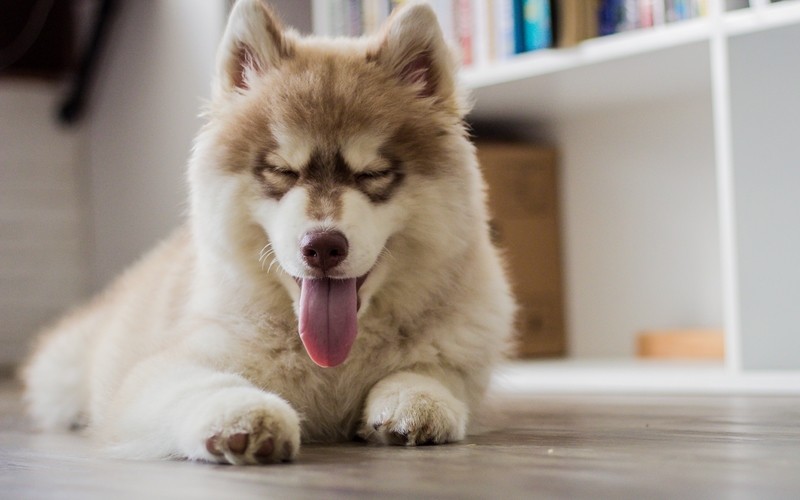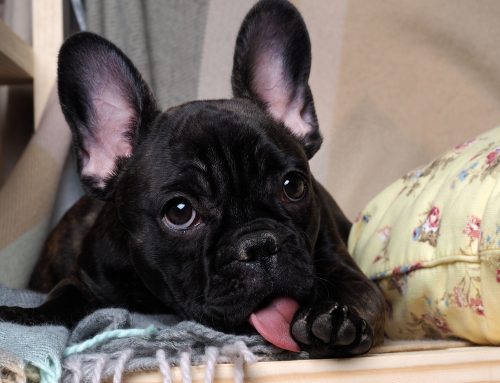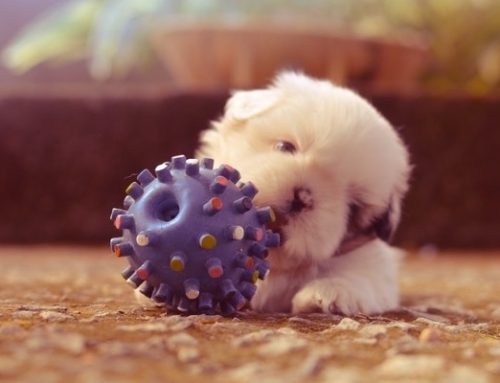Have you been standing near your pet and they start to make a weird snorting sound, like he or she is inhaling and sneezing all at the same time? While this may be startling, especially if you’ve never seen your pet do this before, the phenomenon, known as reverse sneezing, is quite common.
What is Reverse Sneezing?
Unlike a regular sneeze, which is a rapid expulsion of air out of the nose, reverse sneezing occurs when your dog or cat rapidly pulls air into its nose. Reverse sneezing is very rare in cats and some dog breeds are more prone to reverse sneezing than others.
When pets reverse sneeze, you will see them inhale repeatedly through their nose. They usually stand still and extend their neck and head when this happens (Coates). The reverse sneeze will usually happen a few times in a row and may last from a few seconds to a couple of minutes. It will also be accompanied by a snort-like or grunting sound. Once the reverse sneezing episode is over, your pet should go back to normal.
What Causes Reverse Sneezing?
While there isn’t one exact cause for reverse sneezing, the episode can be exacerbated by many different factors. Much like regular sneezing, reverse sneezing can be set off by irritants. Jennifer Coates, DVM writes, “Irritation to the nasal passages (e.g., a snout-full of dust) causes ‘regular’ sneezing. Irritation to the nasopharynx (the area that lies behind the nasal cavities and above the soft palate) causes dogs to ‘reverse’ sneeze (Coates). Reverse sneezing may also occur when your dog becomes over-excited (Klein, 2016).
What Should You Do if Your Pet Reverse Sneezes
When your pet experiences reverse sneezing, you will probably want to help them. One method is to put a finger over your dog’s nostrils for a brief second and massage his or her throat lightly (Klein, 2016). You can also lightly blow in your dog’s face in order to get him or her to swallow. Swallowing will typically stop reverse sneezing and the spasm that affects the nasopharynx (Klein, 2016). Because your pet will be inhaling and exhaling quite rapidly in order to expel any irritants, you should not try to hold your pet tightly. This will only cause them to become more uncomfortable.
While reverse sneezing can be a little scary, there is no need to panic. However, it is a good idea to pay attention to the times your pet reverse sneezes in order to pick up on any triggers. For example, if your pet reverse sneezes after you clean your home or during certain seasons, there could be a correlation. While the majority of reverse sneezing episodes in pets do not require medical treatment, there are some cases where your pet may need to see the vet.
SOURCES
Coates, Jennifer. “PetMD.” PetMD, “Reverse Sneezing in Dogs: Is it Normal?” www.petmd.com/dog/general-health/reverse-sneezing-dogs-it-normal.
Klein, Jerry. “What’s That Loud, Snorting Sound?! – Reverse Sneezing 101.” American Kennel Club, 19 May 2016, www.akc.org/expert-advice/health/what-happens-when-a-dog-reverse-sneezes/.





